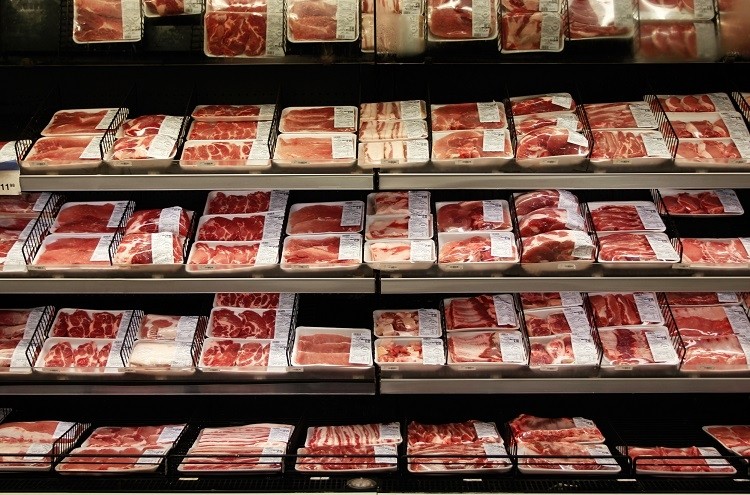Why Residents Love Bagley Farms Meat Market Edwardsville IL for Their Meat Shopping
Why Residents Love Bagley Farms Meat Market Edwardsville IL for Their Meat Shopping
Blog Article
Uncover the Art of the Butcher's Cut in a Modern Meat Market
In the ever-evolving landscape of modern meat markets, the butcher's cut has actually transcended its traditional roots, combining old-time craftsmanship with contemporary techniques. Today's butchers are not merely processors of meat; they are knowledgeable craftsmens that stress sustainability and ethical sourcing. Their experience in choose and preparing cuts customized to details culinary needs uses an unequaled dining experience. Yet, what absolutely establishes the modern-day butcher apart is their capacity to build a much deeper connection in between consumers and the origins of their meat. How do these masters balance tradition with development, and what implications does this have for the future of meat intake?
Evolution of Butchery Techniques
The evolution of butchery methods shows a rich tapestry of advancement and adaptation driven by developments in innovation, changes in consumer demand, and a much deeper understanding of meat science. Historically, butchery was a craft passed down with generations, with approaches refined over centuries to make the most of yield and flavor. The commercial change ushered in automation, changing typical methods and making it possible for massive handling.
The mid-20th century saw butchery techniques even more refined by clinical insights right into muscle biology and meat aging, enhancing both tenderness and taste. Innovations like vacuum product packaging and refrigeration extended product shelf-life, enabling butchers to branch out offerings and boost high quality control. This period additionally marked the rise of specific equipment, such as band saws and meat slicers, which raised precision and performance in meat handling.

Computerized systems now help in tracking pet provenance and optimizing cuts to satisfy particular consumer preferences. In addition, a renewal in artisanal butchery has actually emerged, blending typical skills with contemporary understanding to cater to consumers seeking ethical and sustainable meat choices.
Recognizing Meat Cuts
Comprehending the complexities of meat cuts is vital for both butchers and customers seeking high quality and value. For butchers, precise cuts mirror ability and respect for the craft, guaranteeing marginal waste and optimal yield.

Recognizing muscle make-up is critical; muscle mass utilized a lot more regularly by the pet have a tendency to be tougher and are best fit for sluggish food preparation approaches, while less-used muscular tissues, like those discovered in the loin, are much more tender and perfect for cooking or roasting. Familiarity with these differences equips customers to make enlightened selections, boosting their cooking endeavors.
Choosing Top Quality Meat
Choosing the right meat involves even more than just picking a visually enticing item from the display screen. bagley farms meat market edwardsville il. The art of choosing high quality meat calls for a discerning eye and knowledge of certain qualities that represent freshness and quality. Pay attention to the shade; beef must have a brilliant, cherry-red tone, while lamb ought to exhibit a soft pink tone, and pork a pale pink. This suggests the meat is fresh and hasn't been revealed to oxygen for also lengthy.
Secondly, think about the marbling, which describes the white streaks of fat within the muscle mass. Appropriate marbling is a vital indication of inflammation and taste, as it thaws during cooking, improving the meat's juiciness. Remember, higher marbling usually associates with superior quality cuts, such as USDA Prime.
Appearance is an additional critical variable; meat ought to really feel firm to the touch, not slimed or overly soft. Furthermore, be conscious of the scent. Fresh meat should have a tidy, neutral scent, devoid of any from this source kind of sour or repulsive smells.
Combining Cuts With Food Preparation Techniques

Conversely, harder cuts like brisket and chuck roast are abundant in collagen, which damages down into jelly when prepared gradually. These cuts are perfect for braising or slow-moving roasting, enabling the meat to tenderize with time and establish deep, complicated flavors. Cuts such as brief ribs and pork shoulder fare well with slow-cooking methods, where expanded cooking times change their durable textures into succulent recipes.
Lamb shanks and oxtail, which call for extended cooking to tenderize, are best prospects for cooking or sluggish simmering. These approaches coax out rich, passionate flavors while preserving wetness. By understanding the unique features of each cut, cooks and home chefs alike can elevate their cooking productions, guaranteeing each recipe is both satisfying and remarkable.
The Butcher's Function Today
Navigating the progressing landscape of the contemporary meat market, the butcher's function today prolongs beyond plain prep work of cuts. Contemporary butchers are cooking artisans, educators, and supporters for lasting techniques.
In addition to crafting specific cuts, butchers now engage straight with consumers, using cooking recommendations and tailoring options to match private needs and choices. Their competence in meat aging, marbling, and taste profiles empowers customers to make informed decisions, enhancing their cooking experiences. This personalized solution exemplifies the butcher's developing duty as a trusted advisor in the cooking area.
Moreover, butchers are crucial in minimizing waste, using entire animals to blog produce diverse items such as sausages and supplies. This thorough approach not just appreciates the animal however additionally aligns with modern sustainability goals. This way, the contemporary butcher symbolizes both custom and advancement, adapting to an ever-changing market while protecting the virtuosity and stability of their craft.
Final Thought
Mastery in comprehending diverse meat cuts and high quality indicators empowers butchers to give informed suggestions, lining up specific cuts with optimal food preparation methods. By honoring historic methods while embracing contemporary needs, the butcher's duty stays important in linked here today's advanced meat market.
Report this page